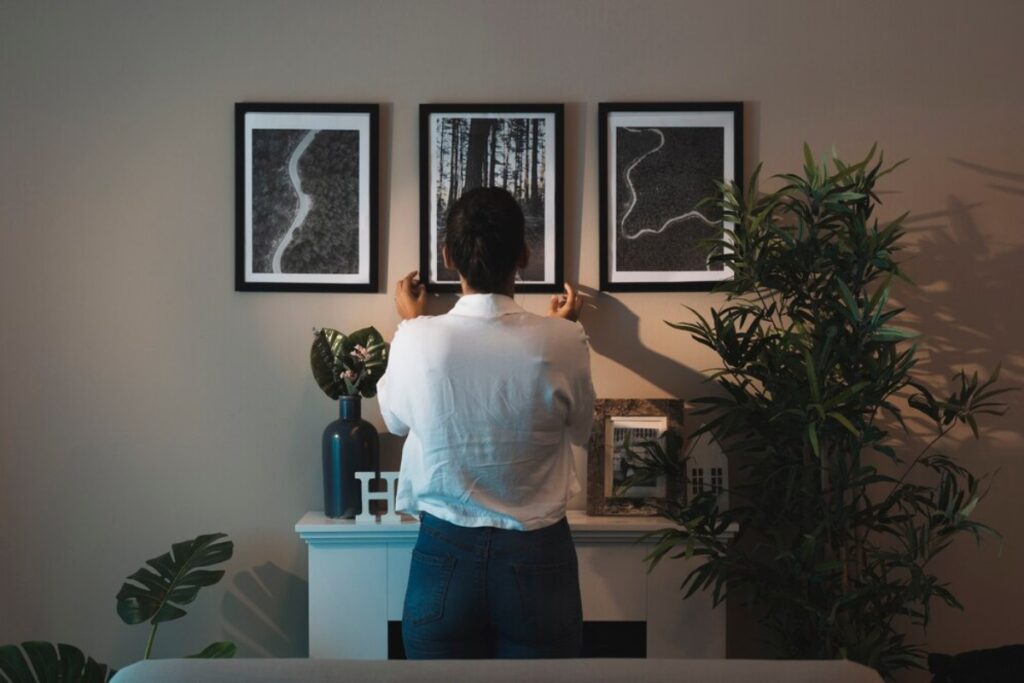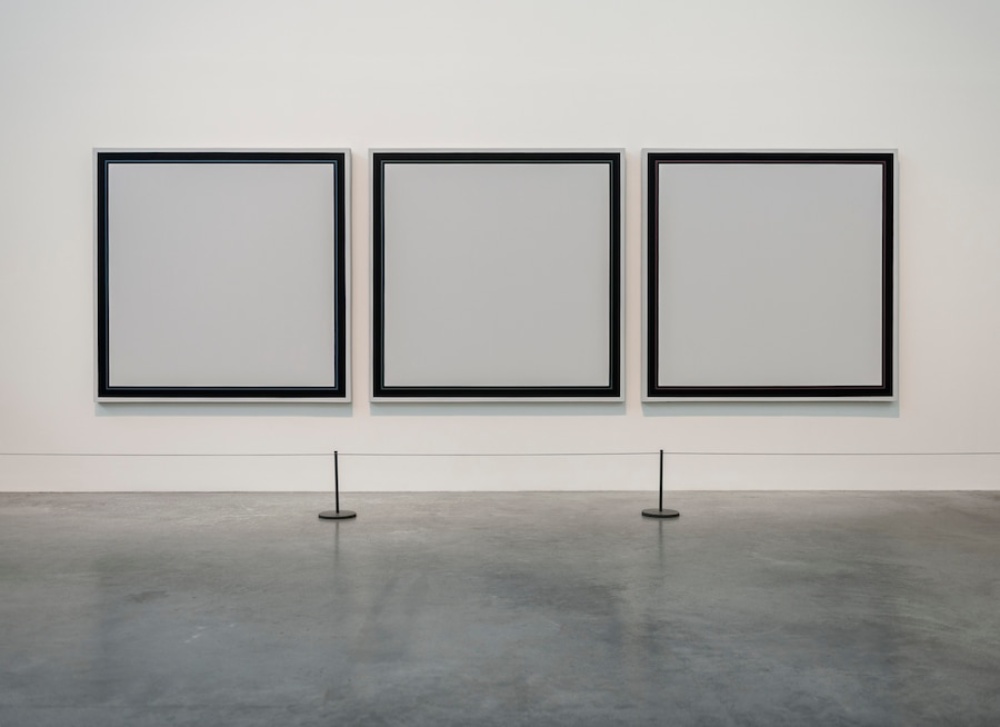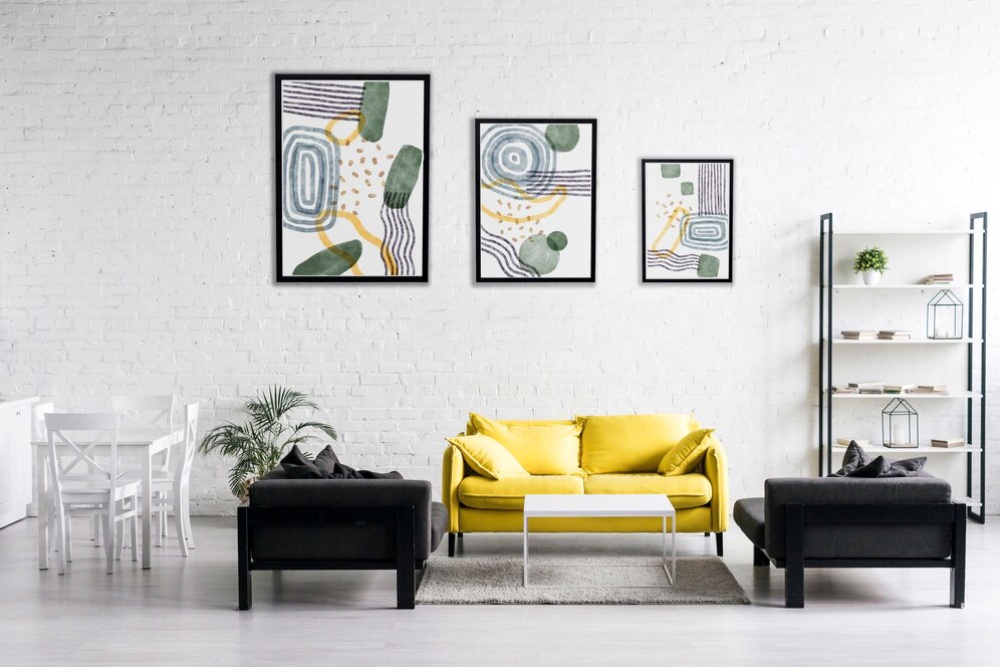The Interior Design Blog

How to Frame and Hang Artwork Like a Professional
Learning to hang art in your home transforms your surroundings. It gives your place character, depth, and a custom look that reflects your taste. No surprise, painting and hanging art can be daunting, even if you’ve got a professional appearance in mind. Knowing how to frame and hang art properly makes it look better and helps maintain its value over time. In this guide, we offer expert advice to help you feel confident when displaying art at home.
Understanding the Core
Framing and hanging art is half art, half science. It’s the third part of the triad that the artwork, the frame, and the space around it make up. If a painting is framed correctly, its beauty will be amplified, and significant details that might otherwise be missed will be highlighted; poor framing will detract from its value. Similarly, the positioning and means of hanging can affect how the piece is perceived and appreciated.
The Importance of Proper Framing
Proper framing serves multiple purposes. It protects the artwork from physical damage and environmental factors such as humidity and light and enhances its visual appeal. A well-chosen frame complements the artwork, adding depth and dimension without overpowering it. The right frame can make a significant difference, turning a simple piece into a striking focal point.
Pro Tip: Too many pieces in one area can look cluttered. Allow each piece to breathe and be appreciated.
The Art of Hanging Artwork
Hanging artwork correctly is crucial for achieving a harmonious and balanced look. It involves considering factors such as eye level, spacing, and alignment. A well-hung piece can create a sense of flow and coherence in a room, while a poorly hung piece can disrupt the visual harmony.
Checklist
Before diving into the detailed steps, here’s a quick reference checklist to help you frame and hang your artwork like a pro:
- Choose the Right Frame: Consider the style, material, and colour that best complement your artwork.
- Protect the Artwork: Use acid-free materials and UV-protective glass to preserve the artwork.
- Plan the Layout: Determine the best location and arrangement for your artwork.
- Use the Right Tools: Have a spirit level, measuring tape, and appropriate hanging hardware on hand.
- Consider Lighting: Ensure the artwork is well-lit but not exposed to direct sunlight.
- Maintain Balance: Ensure even spacing and alignment for a cohesive look.
Important Tip: Large artworks can dominate a small room, while small pieces may get lost in an ample space. Ensure the scale is appropriate for the room.
Quick Guide
Selecting the Perfect Frame

Choosing the right frame is a crucial first step. Consider the following factors:
- Style and Aesthetics: The frame should complement the artwork and the room’s decor. Traditional artworks often pair well with ornate frames, while contemporary pieces may suit minimalist frames.
- Material and Colour: Wooden frames offer a classic look, while metal frames provide a modern touch. The colour should enhance the artwork without overshadowing it.
- Matting: Matting can add depth and focus to the artwork. Ensure the mat is acid-free to prevent damage over time.
Preparing the Artwork
Once you have the frame, it’s time to prepare the artwork:
- Use Acid-Free Materials: Protect the artwork by using acid-free backing and matting. This prevents deterioration and discolouration.
- UV-Protective Glass: Consider using UV-protective glass to shield the artwork from harmful light exposure.
Planning the Layout
Before hanging your artwork, plan the layout:
- Determine the Focal Point: Decide where you want the artwork to draw attention. This could be above a fireplace, on a feature wall, or in a gallery-style arrangement.
- Consider Eye Level: Generally, artwork should be hung at eye level, approximately 145–152 cm from the floor to the artwork’s centre.
- Spacing and Alignment: For a cohesive look, ensure even spacing between pieces. Use a spirit level to maintain alignment.
Hanging the Artwork
Now that you have planned the layout, it’s time to hang the artwork:
- Use Appropriate Hardware: Choose hanging hardware that can support the weight of the artwork. Picture hooks, D-rings, and wire are standard options.
- Measure and Mark: Measure the distance from the top of the frame to the hanging point. Mark this on the wall to ensure accuracy.
- Hang and Adjust: Hang the artwork and use a spirit level to ensure it’s straight. Make any necessary adjustments.
Step 5: Enhancing with Lighting
Lighting can significantly impact how artwork is perceived:
- Avoid Direct Sunlight: Direct sunlight can cause fading and damage. Use ambient or spot lighting to highlight the artwork.
- Consider Adjustable Lighting: Adjustable lighting allows you to control the focus and intensity, enhancing the artwork’s features.
Best Practices & Additional Insights
Create a Gallery Wall
Consider creating a gallery wall for a dynamic display. Mix different sizes and styles for an eclectic look.
Use a Template

If creating a gallery wall, use paper templates to plan the layout before committing to nail holes.
Experiment with Arrangements
Don’t be afraid to experiment with different layouts and arrangements to find what works best for your space.
Secret Tip: Dust frames and glass regularly to maintain their appearance and prevent damage.
FAQs
1. How do I choose the right frame for my artwork?
Consider the style, material, and colour of the artwork’s frame and the room’s decor. The frame should enhance the artwork without overpowering it.
2. What is the best height to hang artwork?
Artwork is typically hung at eye level, approximately 145–152 cm from the floor to the centre of the piece. However, this can vary depending on the room and the viewer’s height.
3. How do I protect artwork from fading?
Use UV-protective glass and avoid exposing the artwork to direct sunlight. Consider using ambient or spot lighting to highlight the artwork without causing damage.
Bringing New Life to Your Walls

If you want to frame and hang artwork like a pro, you have to consider a few key factors. Pick the right frame, design the layout and play with the light. Using the methods discussed in this guide, you will have added beauty to your artwork and created a display in your home like an excellent piece of art yourself. Whether hanging one piece of art or a gallery wall, these expert tips help give you a polished, professional look.
Do you want helpful tips on displaying your art? First, look at your collection. Then, try out various framing and hanging methods. Share your success stories! Showcasing your artwork on social media can inspire others. Happy decorating!









